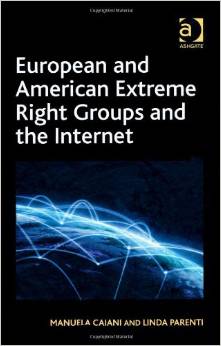
The Internet is generally regarded as an important vehicle of progress; however, it also embodies a ‘dark side’ that is not yet widely understood.
Focusing on extreme-right organisations in six Western Democracies (Italy, Spain, France, Great Britain, Germany and the USA), our study found that the political use of the Internet by extremist groups is significant and plays an important role in identity formation, for organisational contacts, and individual and organisational mobilisation purposes. Whereas these phenomena are well known and studied concerning left-wing social movements, so far relatively scarce scientific attention has been devoted to the extreme right and the internet.
 By combining a formalized comparative web content and social network analysis of around 600 extreme right organizations, our research has shown that different forms of political activism on the Web by right wing groups are indeed on the rise, with the internet increasingly used for diffusing political information and propaganda, promoting cyber community and debate, recruiting new members, generating cross-border contacts, and online and ‘real world’ political mobilisation.
By combining a formalized comparative web content and social network analysis of around 600 extreme right organizations, our research has shown that different forms of political activism on the Web by right wing groups are indeed on the rise, with the internet increasingly used for diffusing political information and propaganda, promoting cyber community and debate, recruiting new members, generating cross-border contacts, and online and ‘real world’ political mobilisation.
In addition, the extreme right virtual communities built by these organisations via the Web are diverse in their structures and functions. French and German extreme right online networks have been shown to take the shape of a ‘star’ (in social network language) that allows for fast and efficient communication, and therefore coordination. Italian and British groups, on the other hand, have a ‘polysepalous’ structure, both centralized and segmented, with many sub-groups, and therefore difficult to coordinate. The US case is different again, appearing as a totally ‘decentralized structure’ with many isolated nodes. An interesting question is whether this is a weakness of the US extreme right milieu or a strategic choice: a form of online ‘leaderless resistance’?
Our analysis has also shown that different types of groups (from political parties to more amorphous neo-Nazi and youth skinhead gangs) use the Internet differently. For example, whilst the Internet’s core function for extreme right parties is political information and communication, neo-Nazis and skinheads go online to mobilise their adherents and to build international contacts. Finally, our study suggests that it is possible to relate the configurations of extreme right communities online and their form and intensity of political activism on the Web with available political opportunities and cultural traditions of the respective countries off line.
To view a video of Prof. Caiani’s keynote lecture, ‘Extreme Right Movements and Online Politics: A Comparative Analysis on Six Western Democracies’ at VOX-Pol’s inaugural conference at King’s College London in 2014 click here.
Manuela Caiani is Associate Professor in Comparative European Politics at the Scuola Normale Superiore of Pisa-Florence (Italy), Institute of Human and Social sciences. . Her main research interests concern social movements and collective action, Europeanisation, and right wing extremism. Among her publications are Social Movements and Europeanisation (Oxford: Oxford University Press, 2009, with Donatella della Porta); Mobilizing on the Extreme Right (Oxford: Oxford University Press, 2012, with Donatella della Porta and Claudius Wagemann); and European and American Right-Wing Extreme Groups and the Internet (London: Ashgate, 2013).
Contact: Istituto di Scienze Umane e Sociali, Palazzo Strozzi, Piazza Strozzi, 50123 Firenze, Italia | Phone: +39 055 2673311 http://www.sns.it
Photo: www.huffingtonpost.co.uk

